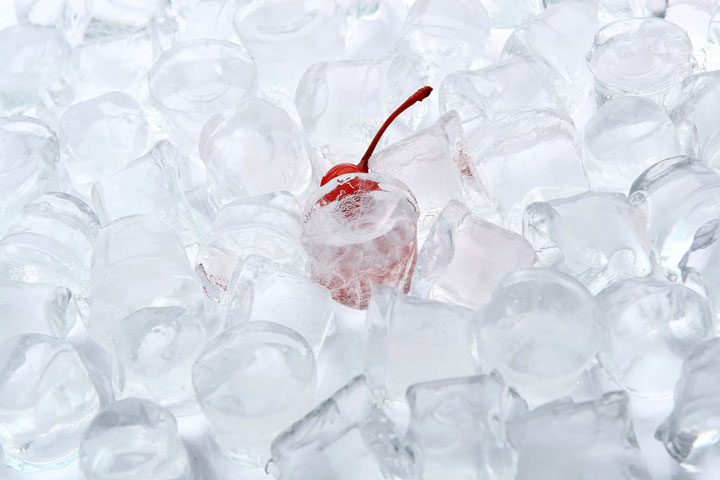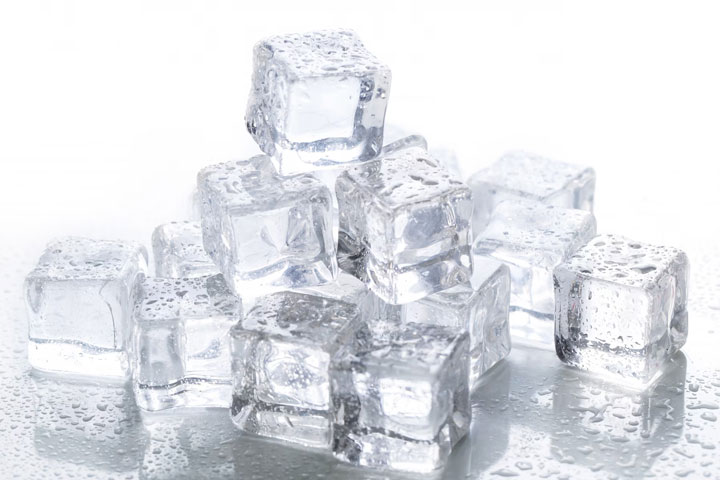If you own a Samsung ice maker not working, this can be frustrating, especially during hot summers when everyone is looking for a refreshing drink.
Fortunately, there are some things that you can do to troubleshoot the problem and get your Samsung ice maker back up and running on your kitchen.
In this article we are going to talk deep into why your Samsung ice maker not working and how common way to fix it!
What are common icemaker issues?

What are common icemaker issues? Ice makers are a convenient appliance that has become a staple in most households.
However, like any other machine, they can sometimes malfunction or break down. Some of the common problems associated with ice makers are:
1. NO Ice
There are a variety of reasons why your icemaker isn’t producing ice, all of which may require different solutions. One common issue is a clogged water filter. If your filter is dirty or blocked, it can restrict water flow to your icemaker and prevent it from producing ice.
Another potential cause for no ice production could be a malfunctioning water inlet valve. This valve controls the flow of water into the icemaker and if it’s not functioning properly, the icemaker won’t receive enough water to make ice.
Another possibility is that there is an issue with the temperature control in your freezer. Check also if freezer not working but fridge is fine, If the temperature isn’t low enough, then the water will not freeze and thus no ice will be produced by your icemaker.
2. Slow Ice Production
An icemaker usually consists of three components: a water valve, an ice mold, and a control module that regulates the process. When the control module signals for ice production, the water valve opens, releasing water into the mold.
The mold then freezes that water into ice cubes before ejecting them into a bin below. If any of these components malfunction or require maintenance attention, it can lead to slow ice production.
One reason for slow ice production could be due to low water pressure or restricted airflow around the condenser coil. This restriction causes heat buildup and prevents efficient cooling of the system’s refrigerant lines resulting in slowed down freezing capabilities.
3. Small or hollow ice cubes
Firstly, it’s possible that your icemaker isn’t getting enough water. If there isn’t enough water flowing into the machine, it won’t be able to create large or solid ice cubes.
You should check to make sure that the water line leading to your icemaker isn’t clogged or kinked. Additionally, you may want to consider adjusting the water pressure in your home if it’s too low.
Another reason why you might be getting small or hollow ice cubes is due to a faulty thermostat. If the temperature inside of your icemaker is too high, it won’t freeze properly and will result in smaller or hollowed out ice cubes.
4. Icemaker is leaking water
One of the most common issues icemaker owners face is water leakage. If you’re experiencing this problem, it could be due to a variety of factors. Here are some possible reasons why your icemaker might be leaking water.
Firstly, check the water supply line that feeds the icemaker. It may have become loose or damaged over time, causing water to leak out.
You should also ensure that the fill tube inside the freezer isn’t blocked with ice or debris as this can prevent proper water flow and cause overflow.
Another possible cause for leakage could be an issue with the inlet valve. This valve controls how much water flows into your fridge’s icemaking unit and if it’s faulty, excess water can leak onto your floor.
5. Ice with a bad taste or odor
There are several reasons why ice from an icemaker might have a bad taste or odor. One common cause is a dirty water filter. Over time, the filter can become clogged with sediment and bacteria, leading to foul-tasting ice.
Another possible culprit is mold growth inside the icemaker itself. If the mold is left unchecked, it can spread and contaminate all of the ice produced by the machine.
6. Ice dispenser not working
There are several reasons why your ice dispenser may not be functioning properly, but it’s important to know how to troubleshoot the issue before calling in a repair technician.
Check to see if there’s any ice blocking the dispenser chute or blade. This can happen if the ice has clumped together or if someone accidentally put something other than ice into the dispenser. If this is the case, simply remove any obstructions and try again.
Another common issue with an icemaker’s dispenser is a faulty motor or switch. The motor controls the movement of the auger that dispenses ice, while the switch signals when you want to dispense ice. If either of these components isn’t functioning properly, it can lead to issues with dispensing ice.
Why Samsung Ice Maker Not Working

If your Samsung fridge’s ice maker isn’t making any ice, you could have a few issues. The most likely one is a blocked water line.
It’s also possible that the thermostat switch isn’t sensing when to turn on or off. Or, the bin-level control arm isn’t measuring the right amount of ice.
Here are more detailed reason why your Samsung Ice Maker not working:
1. Frozen water supply line
One common culprit of this issue is a frozen water supply line. This occurs when the water in the line freezes due to low temperatures, causing a blockage and preventing water from reaching the ice maker.
If your Samsung ice maker is not working, it’s important to first check for any signs of a frozen water supply line.
You can do this by locating the water supply valve behind or under your refrigerator and shutting off the water supply. Then, disconnect the line from both ends and use a hairdryer or warm towel to thaw out any visible ice in the line.
If you’re unable to locate or thaw out any visible ice in the line, it may be necessary to call a professional for assistance.
2. Faulty water inlet valve
A faulty water inlet valve is a common culprit for why Samsung ice makers stop working.
The ice maker relies on the water inlet valve to supply it with fresh water, which will then be frozen into ice cubes. If the valve is not functioning properly, this crucial step in the process cannot be completed, leaving you with a non-functional ice maker.
Fortunately, there are some signs that can alert you to a problem with your water inlet valve before your Samsung ice maker stops producing ice altogether.
If you notice any leaks or dripping from the valve itself or from any of the connections leading to it, this could indicate an issue.
Additionally, if your fridge has trouble dispensing water or if there is low pressure in your water supply line, these issues may also be caused by a faulty inlet valve.
3. Faulty ice maker assembly
Firstly, check that the freezer temperature is set correctly as this can affect the functionality of the ice maker assembly. If it’s too warm or too cold, it could prevent the ice maker from producing ice.
Secondly, ensure that water supply to the refrigerator is sufficient and not blocked by any kinks or leaks in the hose. If water isn’t reaching your fridge at an adequate rate, then you won’t have enough for your ice maker to use.
Finally, inspect your unit’s water inlet valve for dirt or grime build-up as this can impact its performance as well.
4. Clogged water filter
A clogged water filter restricts the flow of water to the ice maker, which leads to problems in its operation. As a result, no new ice will be produced by the machine until you have resolved this issue.
It is important to note that replacing a Samsung refrigerator’s water filter regularly can prevent this problem from happening in the first place.
5. Improper temperature settings
When the temperature within the freezer is too high, it can cause the ice maker to malfunction. This can be due to a variety of reasons, such as a faulty thermostat or a clogged air vent.
To troubleshoot this problem, start by checking the temperature setting on your freezer. Make sure it’s set to the recommended setting for your particular model. If it’s not, adjust it accordingly and wait a few hours to see if that resolves the issue.
If adjusting the temperature doesn’t work, you may need to check for other potential causes like clogged air vents or a malfunctioning thermostat. In some cases, these issues may require professional repair services to address properly.
Fixing Samsung Ice Maker Not Working

If you own a Samsung refrigerator and are struggling with a malfunctioning ice maker, you’re not alone.
Many Samsung fridge owners have reported issues with their ice makers not working properly. The good news is that in most cases, these problems can be fixed relatively easily.
Here are some tips on how to fix Samsung Ice Maker Not Working on your own!
1. Replace the corroded parts
Unplug your Samsung refrigerator to avoid electrocution. Access the back and locate where it connects to the supply line beneath your sink. Turn off the shut-off valve supplying water to your refrigerator. If you can’t turn it off, replace it with a new one and replace any corroded parts.
Detach the hose from the inlet valve. Use a hair dryer or hot towel wrap on the affected area until defrosted.
Inspect valves, filters and screens and replace any necessary with genuine OEM parts suggested by Samsung customer service. Make sure all connections are snug and no leaks present.
Return power to the fridge and press the ice maker button to run a test cycle until cubes eject out. Replace the old filter with a fresh Genuine OEM replacement part suggested by Customer service.
2. Fixing Clogged Water Filter
Check and replace the filter. Then reset the ice maker. If you can’t find the issue, get a certified repairperson.
A blocked water filter can stop the ice maker’s pressure flow. This can cause it to stop producing cubed and crushed ice. The most common problem is when sediment accumulates in the water filter.
To fix it, turn off power to the fridge by flipping its circuit breaker. Remove and inspect the existing filter. Replace any filters with blockage or wear.
Turn on power and reset the icemaker. Press down on its highest setting button/switch 3-5 times. Wait 30 seconds after each press. This should take 2 minutes. If that doesn’t help, get professional appliance help.
3. Fixing Faulty Water Inlet Valve
The water inlet valve of a Samsung refrigerator is responsible for feeding water to the ice maker. When problems arise, it may need to be replaced.
Issues with the valve can cause a lack of ice production, inadequate water, or temperatures that are too hot or too cold. Troubleshoot the Samsung refrigerator water inlet valve with these steps:
- Check the power source.
- Ensure the door is closed and latched.
- Look for frost buildup on freezer walls or inside the ice maker unit.
- Make sure the shutoff valves are enabled.
- Inspect plumbing lines for cracks, tears, or leaks.
- Remove access panels and check for ice build up. Clogged coils can cause inefficient operation due to insufficient air pressures.
- Additional frost in the bin may indicate blocked channels caused by incorrect plumbing. Check for digital arms consoles, found on newer fridges from 2004 or later.
4. Fixing Malfunctioning Ice Maker Assembly
One key factor in fixing it is proper cleaning of all parts. Wipe connection points so dust doesn’t accumulate. Check tubes running from each part, and clean out any dirt or debris before reattaching. Then, see if your Samsung Ice Maker is functioning as intended before replacing any faulty parts.
5. Fixing Faulty Temperature Sensor
A faulty temperature sensor can cause problems in many Samsung ice makers. Diagnosing the issue is important. Troubleshooting the temp sensor can help find out if it’s the culprit and how to fix it.
Check the power and connections first. Ensure the cords from the fridge, air filtration system and other sensors are secure.
Clear any blockages in the fridge or freezer compartments that could put pressure on the hoses or tubes. Check for damaged seals too.
If the power supply and connections are ok and there are no blockages, then test the temp sensor with a publicly available multimeter. F
ollow safe practices when checking current. Check the 3 pins – positive, ground and neutral – to detect damage. This will show if the sensor needs replacing.
6. Fixing Low Water Pressure
To fix the issue, you must first figure out why there is low water pressure. It could be due to a faulty shut-off valve, low-pressure tubing, or clogged main line pipes.
Once you know the cause, you can begin repairs. If it’s the shut-off valve, contact a professional plumber.
You may also need to replace any damaged tubing or main line pipes with the right size replacements.
Lastly, clear any clogs so the water flow into the refrigerator’s main line pipe system is unrestricted. This will ensure the Samsung ice maker works effectively at full capacity.
7. Fixing Samsung ice maker not working but water does
If you own a Samsung fridge with an ice maker, you may experience problems. If the ice maker isn’t working, but the water is, the water lines in the freezer could be frozen or blocked. To fix it, inspect the freezer and thaw out any frozen lines.
Leaky or malfunctioning solenoid valves can also be the cause. These control the water supply and need replacing if broken.
Excessive sediment in filters or tanks can also cause poor performance. Regularly clean out filters to fix this problem. Then, your Samsung refrigerator’s ice maker will be back in business!
8. Fixing samsung ice maker not working bottom freezer
Unplug the Samsung bottom freezer unit from the wall outlet and wait for a few minutes to reset the ice maker. If this doesn’t resolve the issue, inspect the water filtration system. Ensure both ends of the water line are connected properly and replace any faulty filters.
Check if there’s an issue with water pressure in your home. Examine the condition of the icemaker’s evaporator plates and coils. They may need to be cleaned or repaired if they’re damaged or blocked with frost. Adjust temperature settings or seal potential drafts in the refrigerator compartment, if there’s an issue with air temperature.
Update the refrigerator software version. Excessive moisture in the evaporator fan assembly can lead to premature freezing. Check for software updates to fix this issue.
Try manually placing cubes of tap water into the icemaker. If they don’t freeze overnight, replace the entire icemaker unit.
Will water filter cause ice maker not to work?
It’s possible a water filter can stop your ice maker. If it’s blocked, it’ll block the water entering the fridge and break the ice maker. Replace your filter every 6 months or when it’s clogged. Inspect it regularly and change it if needed.
Also, check the water inlet valve. Make sure it’s clean and working to let enough water into the fridge so the ice maker works. If you still have problems, talk to a certified expert for help.
Will Samsung ice maker work without filter?
Which filter system your Samsung ice maker uses depends on the model. Some require an external filter, while others contain an internal one. Both filters are important to improve the taste and quality of the ice. Externals trap sediment and minerals, while internals reduce bacteria.
Don’t use a Samsung machine without a filter, as it could lead to bad-tasting ice or contamination. Some models will alert you when to replace the filter, but make sure to change them regularly, even if yours doesn’t.
How long do ice makers last?
An ice maker’s life can range from five to ten years with proper care. Cleaning and maintenance will help extend its life.
Check the system’s components like the door seals, coils, and water supply line. These corrode over time and should be checked or replaced.
How do I know if my ice maker is making ice?
Hear a clicking, tapping sound? That’s your Samsung ice maker functioning properly. It should also make a “gurgling” noise when the temperature sensor activates. You may even find loose ice cubes in the bin.
No sound or activity? Something’s up! Test it:
Listen for clicks or tapping sounds. Nothing heard after 3 minutes? Not making ice.
Check if water is entering the unit. Wait 10 minutes, then open and look for water.
Feel for cubes in the bin. Hand in to check for loose cubes or slushy bits.
No activity detected? Contact Samsung customer service for help.
“There is no real ending. It’s just the place where you stop the story.”






